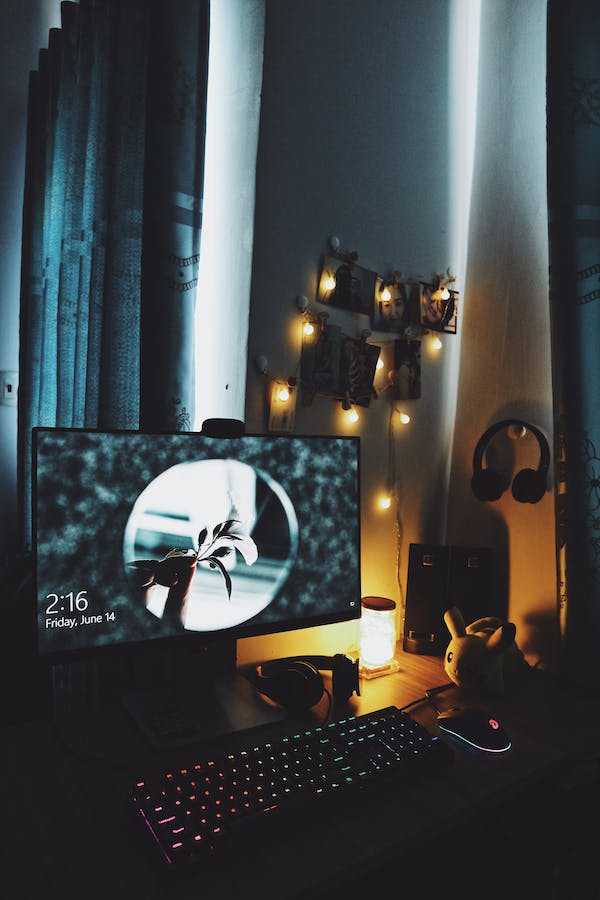How to Build Cheap Gaming PCs and Save Money
by Admin

Gaming PCs can be expensive, but they don't have to break the bank. This budget-friendly build can play most games at 1080p at high settings.
The chip shortage is finally starting to ease up and components are becoming more affordable. This is a great time to build a cheap gaming pc!
What You Need
The central processing unit (CPU) is the brain of your PC. It processes instructions, dictates tasks to other components and is responsible for determining the performance of your gaming system. As such, the CPU has a greater impact on your PC's overall performance than any other component except for the graphics card.
It's important to consider what you want from your gaming PC when choosing a CPU. For example, are you looking to play demanding games at high frame rates or do you simply want to enjoy lower-demanding titles? Once you know your desired performance, choose a CPU that meets or exceeds those specifications.
Next, select a motherboard that supports your chosen processor. There are many different motherboards on the market, but if you're looking to save money, opt for an inexpensive model. High-end motherboards are typically more expensive and offer premium features that may not be necessary for your build.
Finally, pick up a case and power supply for your PC. The case will determine the size of your motherboard and dictate how much space you have for components like the CPU, RAM, and GPU.
Before you start working on your PC, make sure that you have a small area cleared to work in and prepped with a few tools. Having a phillips head screwdriver is essential, but a parts tray is also useful for keeping your screws organized. Additionally, it's a good idea to wear an anti-static wristband during the assembly process. This will prevent any static electricity from damaging your sensitive hardware components. This is especially important if you're standing on carpet or have a shirt that doesn't fully discharge static electricity.
CPU
The CPU is the brain of your computer, executing instructions and dictating tasks to other components. It has a huge impact on everything you do, from gaming to streaming, content creation, and even simple multitasking. It’s important to know how to choose the right CPU for your budget.
When you’re trying to build a cheap gaming PC, an older processor will likely be a bottleneck. While you could get by with a salvaged one from an old office rig, it’s best to invest in a new CPU. You can find plenty of affordable options by AMD and Intel.
Once your parts have arrived and you’ve prepped a small workspace, it’s time to start the build. First, you’ll want to remove the motherboard from its packaging and place it on top of the static sheet that came with it. Then, you’ll want to remove the CPU from its packaging.
When removing the CPU, be careful not to damage the gold contacts underneath. Hold it by the edges and gently lower it into its socket on the motherboard. Line up the arrow on the CPU with the corresponding arrow on the motherboard and gently press down. If you do this correctly, your rig will be ready to rock. Now you can enjoy lag-free gaming in 1080p at high settings! Good luck! You’ll be playing like a pro in no time.
Graphics Card
The graphics card is the one component that will have the biggest impact on how well you play games, especially at higher resolutions. There are cheap GPU options available for around $200 that can easily play modern games at 1080p and even do better at lower settings. These cards are perfect for either a new budget gaming build or for upgrading an older PC that can't keep up with the latest titles.
If you are on a very tight budget, it is worth considering buying a used graphics card as this can be a lot cheaper than buying a new one. However, be warned that older GPUs may struggle to maintain high frame rates on modern games when combined with a slower CPU. It's best to use a more recent GPU if you can afford it.
To install the card, first remove it from its antistatic packaging and align it with both the rear retention bracket and the slot itself (you should hear a click). Secure the card using the included screws and connect any required auxiliary power connectors. Some cards will also require a PCI-Express connector that plugs into the motherboard; if this is the case, ensure it's plugged in properly.
Once the card is installed, it's time to hook up the rest of your system. This will involve connecting a monitor, keyboard, mouse and speakers to the motherboard, as well as a power cable from the PSU to the GPU. You should then hook up a hard drive, with at least a 1 TB 7200RPM model. If you have a bit more money to spend, you could consider adding a solid state drive to your build for faster boot and load times.
Case
The case is the home of all the parts, and will determine how well everything runs. It's important to pick a case that's not too big (you want room for air-ventilation), but not so small that you can't fit in components. Look for a case that fits your motherboard size, and makes sure you have enough space for a full-length graphics card. If you're not sure, consult a hardware reviewer or your motherboard manual for guidance.
It's also worth picking a case with plenty of ports, including USB-C and USB-A. You can use these for gaming accessories and to connect an external monitor to the PC. Make sure the case has enough space for your power supply and fans, and has no sharp edges that could scratch or break other components.
Once you've got all the parts in the case, it's time to install an operating system. Most modern PCs run on Windows 10, and the latest Intel processors can only unlock their full potential if you're running the most up-to-date version of the OS.
A 1 TB 7200 rpm hard drive will give you lots of space for games and media. You might also want to consider adding a smaller, faster SSD to store your operating system and favourite games on, so they load quicker. These can be cheap when you shop during sales. They can be as little as $20 for a 120GB model.
Power Supply
A decent power supply is essential for your build, and it's not something you want to skimp on. A cheap PSU might be fine for older prebuilt PCs, but it can present a fire hazard in any modern PC. There are several things to look for when shopping for a new power supply. You'll want to find one with good efficiency ratings (e.g. 80 Plus), and it should be built with quality components (e.g. 85C capacitors). It should also have plenty of connectors to fit your motherboard and any other expansion cards you might need. And it should have good ripple suppression, which means it can handle high-draw components without frying them.
The Corsair VS550K is a great choice for a budget power supply. Its 550W capacity is enough for any entry-level gaming build, and it has excellent efficiency ratings to keep your electricity bills low. It also has a lot of power-draw-reducing features, such as multi-rail output and active power draw control. This ensures that your system won't accidentally fry a costly component, like your GPU.
Another great option is the Thermaltake Smart 600W. Its design is clean, and it has a single 120mm fan that keeps the unit cool under load. It also has plenty of connectors, including 2x 8-pin PCIe and 1x 16-pin Nvidia power connector. It has a good +12V rail output, which can easily power most gaming GPUs. It also has OCP and SCP protection to prevent short circuits and other electrical failures.
You can also check out the Corsair RM series. Its latest 750W model is fully modular, which helps keep your case neat and tidy. It has a good 80 Plus Gold efficiency rating, and it's built with LAMBDA-A+ certified capacitors. It's also backed by a 10-year warranty, which is a big testament to its durability.
https://pchardwarerefresh.com.au/
Gaming PCs can be expensive, but they don't have to break the bank. This budget-friendly build can play most games at 1080p at high settings. The chip shortage is finally starting to ease up and components are becoming more affordable. This is a great time to build a cheap gaming pc! What You Need The…
Recent Posts
- Comparing Invisalign and Traditional Braces for Teeth Straightening
- 2 Gen Realty LLC: Your Premier Partner for Real Estate Services in Waco and Beyond
- Anew Vision: Leading the Way in Transitional Independent Living Programs and Free Sober Living Homes in Texas
- CEDAR PARK ROOFING PRO’S: Your Trusted Partner for Premium Roofing Solutions in Cedar Park
- Carte Blanche Moving: The Premier Choice for Stress-Free Relocations in Flower Mound and Argyle, TX
